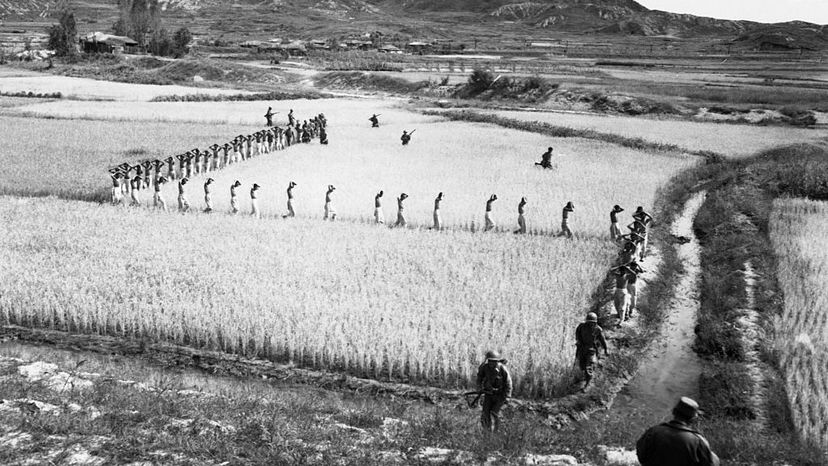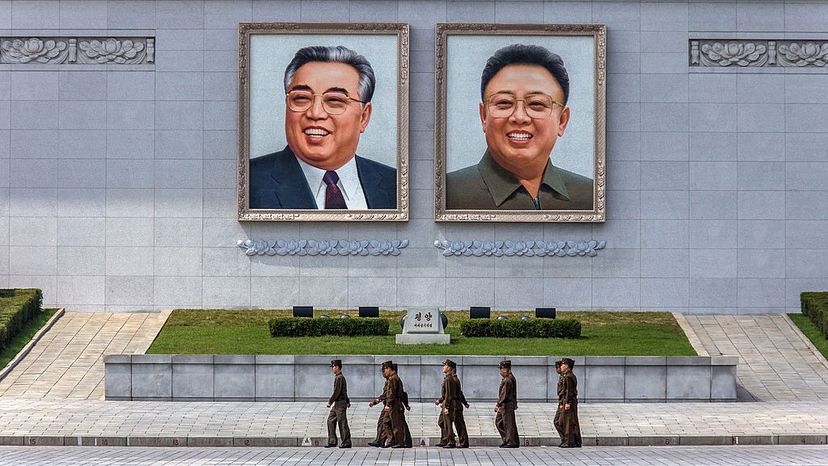
In July 2017, North Korea's state-run news agency released an inflammatory statement: "Should the U.S. dare to show even the slightest attempt to remove our supreme leadership, we will strike a merciless blow at the heart of the U.S. with our powerful nuclear hammer, honed and hardened over time" [source: Cohen and Starr].
Once that might have seemed like nothing more than empty bluster. But North Korea's bellicosity is being taken more seriously these days, now that the nation's 30-something dictator, Kim Jong Un, has accelerated efforts to develop intercontinental ballistic missiles (ICBMs) capable of hitting U.S. cities. A few days after North Korea issued its warning, it successfully launched a missile that, if it had been on a flattened trajectory, might have traveled 6,500 miles (10,400 kilometers) — putting it in range of Chicago, according to David Wright, co-director of the Union of Concerned Scientists.
Advertisement
The U.S. responded with a show of force, flying two B-1 bombers over the Korean peninsula, and conducted a test of its Terminal High Altitude Area Defense (THAAD) missile defense system based in Alaska. U.S. Pacific Air Forces Commander Terrence J. O'Shaughnessy called North Korea "the most urgent threat to regional stability" [source: Associated Press].
A few weeks later, after promising to bomb the U.S. territory of Guam, North Korea changed its mind and said it would not be firing any missiles at this time. Kim Jung Un said he "would watch a little more the foolish and stupid conduct of the Yankees" [source: Chappell].
It's strange to think that such a crisis could be created by a small, relatively poor country of 25 million, which has existed for decades in isolation imposed by its totalitarian rulers. How has North Korea, one of the world's last remaining communist regimes, managed to survive? What does North Korea's dictator really want from the rest of the world, and what is he willing to do to get it? And what should the rest of the world do to avoid some catastrophic scenario? We'll examine those questions and more in this article.
Advertisement






